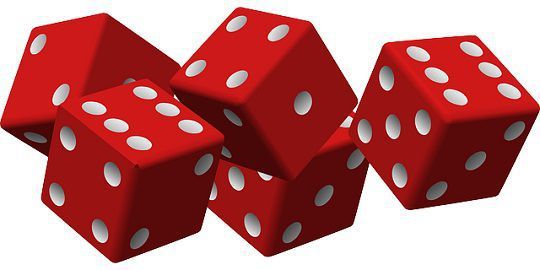 You might have noticed that we make statements like the trains may be late, it may take an hour, to reach home and so forth. This type of statements indicates the probability of an event, as its occurrence is not certain. It implies the extent to which an event is possible to happen.
You might have noticed that we make statements like the trains may be late, it may take an hour, to reach home and so forth. This type of statements indicates the probability of an event, as its occurrence is not certain. It implies the extent to which an event is possible to happen.
Probability is divided into two types, objective and subjective probability. Subjective probability is based on attitude, belief, knowledge, judgment and experience of the person. In mathematics, we study objective probability.
Probability is not similar to odds, as it represents the probability that the event will happen, upon the probability that the event will not happen. Now, let’s take a look at the difference between odds and probability provided in the article below.
Content: Odds Vs Probability
Comparison Chart
| Basis for Comparison | Odds | Probability |
|---|---|---|
| Meaning | Odds refers to the chances in favor of the event to the chances against it. | Probability refers to the likelihood of occurrence of an event. |
| Expressed in | Ratio | Percent or decimal |
| Lies between | 0 to ∞ | 0 to 1 |
| Formula | Occurrence/Non-occurrence | Occurrence/Whole |
Definition of Odds
In mathematics, the term odds can be defined as the ratio of number of favourable events to the number of unfavourable events. While odds for an event indicates the probability that the event will occur, whereas odds against will reflect the likelihood of non-occurrence of the event. In finer terms, odds is described as the probability that a certain event will happen or not.
Odds can range from zero to infinity, wherein if the odds is 0, the event is not likely to happen, but if it is ∞, then it is more likely to happen.
For example Suppose, there are 20 marbles in a bag, eight are red, six are blue, and six are yellow. If one marble is to be picked at random, then the odds of getting red marble is 8/12 or say 2:3
Definition of Probability
Probability is a mathematical concept, which is concerned with likelihood the occurrence of a particular event. It forms the basis for a theory for testing of hypothesis and theory of estimation. It can be expressed as the ratio of the number of events favourable to a specific event, to the total number of events.
Probability ranges from 0 and 1, both inclusive. So, when the probability of an event is 0, it denotes an impossible event, whereas when it is 1, it is an indicator of the certain or sure event. In short, the higher the probability of an event, the greater are the chances of the occurrence of the event.
For example: Suppose a dartboard is divided into 12 parts, for 12 zodiacs. Now, if a dart is targeted, the chances of occurrence of areas are 1/12, as the favourable event is 1, i.e. Aries and a total number of events are 12, that can be denoted as 0.08 or 8%.
Key Differences Between Odds and Probability
The differences between odds and probability are discussed in the points given below:
- The term ‘odds’ is used to describe that if there are any chances of the occurrence of an event or not. As against, probability determines, the likelihood of the happening of an event, i.e. how often the event will take place.
- While odds are expressed in the ratio, the probability is either written in percentage form or decimal.
- Odds usually ranges from zero to infinity, wherein zero defines impossibility of occurrence of an event, and infinity denotes the possibility of occurrence. Conversely, probability lies between zero to one. So, the closer the probability to zero, the more are the chances of its non-occurrence and the closer it is to one, the higher are the chances of its occurrence.
- Odds are the ratio of favourable events to the unfavourable event. In contrast, the probability can be calculated by dividing the favourable event by the total number of events.
Conclusion
Probability is a branch of mathematics, which includes odds. One can measure chance, with the help of odds or probability. While odds are a ratio of occurrence to non-occurrence, the probability is the ratio of occurrence to the whole.






Leave a Reply